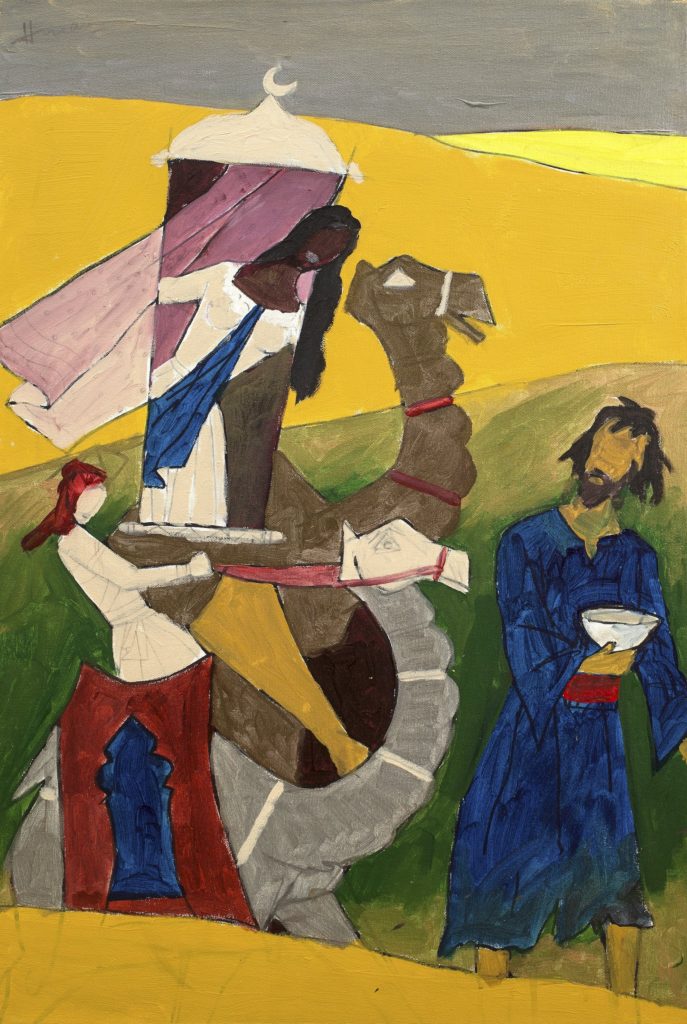M.F. Husain’s vision was deeply entrenched in Indian sensibility from the outset of his career. He incorporated local traditions and juxtaposed diverse folk elements, plying numerous sources to present a wide range of themes in his works. In them, he covered the profound and the mundane, but returned time and again to his cultural roots.
As a conscious artist, Husain looked closely at Indian literature and represented them in his paintings, reconfiguring and recontextualizing them to suit the needs of his time. He borrowed their classical themes and depicted them into his unique visual vocabulary, evolving his art and making it culturally comprehensive in the process.
Premised on the series on lovers, the current lot titled ‘Laila Majnu’ is based on the popular Arabic tale “Majnun Layla” about the 7th-century Bedouin poet Qays ibn al-Mullawah and his love, Layla bint Mahdi. In the story, Qays fell madly in love with Layla; in his obsession, he composed numerous poems of love repeatedly mentioning her name and earning him the moniker ‘Majnun,’ meaning crazy. Due to his social standing and reputation, they were ultimately kept apart, driving Majnu to insanity and death.
The story dubbed as ‘the Romeo and Juliet of the East’ was passed from Arabic to several other languages and has been represented in varied artistic traditions throughout history. In this reinterpretation, Husain depicted Majnu deep in his madness – unkempt, begging for food, and wandering the deserts pining for his love. He used bright jewel-toned colors, even coarse lines, and postures from Indian classical sculptures in depicting the characters. The demotic stylistics, folk elements, and vibrant colors characterize Husain’s signature style.
Husain attempted to communicate the essence of the story in simplistic composition, transforming his protagonists into archetypal figures and depicting them with featureless faces. He stretched their personas and used the immense narrative of the story to convey deeper meaning more than the explicit imagery. By placing them in an abstracted context, they become ambivalent, their purpose extending from straight-forward representation to a more metaphorical suggestion, and thus allowing for pluralistic readings. Ultimately, however, the correct interpretation is of less importance than the characteristic ambiguity of the works.
Auction Catalogue – South Asian Art – ‘Modern and Contemporary’ – March 12 -16, 2020
